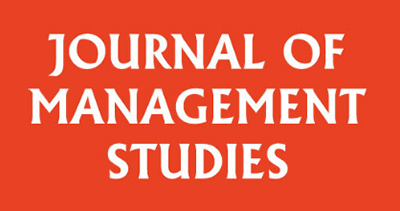
Organizational members often thwart organizational norms through transgressing them, remaking them in new ways, or otherwise working around and through existing norms. Such forms of transgression, which we describe as deviance, have traditionally been examined in a negative light, as forms of organizational misbehavior. More recently, scholars have begun to acknowledge the positive potentials of deviance as sources of creativity, innovation or resistance. In the debate over whether and when deviance is positive or negative, the focus of most literature has been around individuals’ actions and their consequences. However, what is perhaps most interesting about deviance is how it reveals structural fault lines within organizations, the navigation of which leads organizational members to adopt deviant practices.
An important line of sociological theorizing around structural strain focuses precisely on deviance as an outcome of structural strain, a rich theoretical tradition initiated by Merton[1] that has been subsequently underdeveloped in organizational studies. Revisiting this tradition is of practical import because it provides a ground on which to understand how actors deal with structural tensions to reshape norms and create new norms through acts of deviance. In the organizational environments of contemporary capitalism, which are riven with structural strains and contradictions, this older line of theorizing can be retooled away from describing conformity or deviance to fixed rules, to instead examine how tensions over norms and new norm creation can be an ongoing aspect of organizational life.
To examine how organizational members use deviance to navigate structural strains in organizations, we engaged in ethnographic research involving a Brazilian accounting and consulting firm. We examined how branch managers experienced structural strain, leading them to deviant practices that influenced relations between norms and everyday organizational functioning. Our study involved immersion in the managers’ daily lives and activities, closely observing and recording everyday interactions, as well as formal and informal interviews over 7 months of fieldwork.
Our study’s results, published at the Journal of Management Studies, involved, first, examining the conditions under which deviant practices could emerge, and then describing these practices and how they responded to those conditions. In terms of the background conditions, these managers faced intense demands in their particular branch, which was located in a much more competitive environment than their headquarters, leading to a mismatch in terms of external pressures and internal capabilities. The branch managers were formally given little power and authority, yet with very high-performance expectations at the individual level. Moreover, while having little formal authority, managers enjoyed great leeway of action, with loose controls and high geographic and symbolic distance from the headquarters. This mixture of high internal and external pressure, little formal empowerment but great span of de facto discretion over day-to-day activities, created a situation in which the branch managers searched for ways to navigate the multiple demands outside of headquarters’ mandated practices.
In this context, many organizational policies which seemed prima facia reasonable became unworkable obstacles for the managers. For instance, norms around audit cycles were experienced as having inadequate quality control for the highly demanding customers, while human resource career plans were inadequate for a highly-skilled and in-demand workforce. The mismatch between organizational goals and norms created structural strains. Managers addressed such strains by drawing on their discretionary leeway to remake the organization accordingly. In our study, they did so in three ways, which differ in terms of the radicality of deviance.
First, we observed branch managers rescoping norms, which involved over-conformity to the spirit of the norm in such a way as to constitute deviation from its letter. Rescoping involved deviance in the interest of the norm itself, addressing its lack of adequate specification in the practical situation at hand. For instance, adding additional quality controls that were not mandated by headquarters allowed enhanced audit quality precisely by improvising extra-mandated practices.
Second, we observed branch managers reconfiguring norms, which involved selectively conforming to the norm, creating a distorted re-production of the norm. Not challenging practices directly, managers created modified versions of those practices, involving imagining new actions made possible by a loosely constraining norm. For instance, periodic meetings mandated by headquarters were amplified in scope and reduced in frequency – but unchanged in name – creating a formally equal but practically unrecognizable form of meeting that fit the interests of the branch.
Third, and most radically, branch managers would replace norms with entirely separate plans, departing from mandates to construct a separate branch reality. Replacing norms was rare and involved direct flouting of organizational policy, with high risks for the managers involved. For instance, making human resource arrangements that were unsanctioned and unsupported by headquarters allowed branch managers to find sorely needed talent, even while taking on the risk that their promises may not be realizable in the future. In such deviance, there was often a tacit acceptance that members would “figure it out” as time went by, projecting new realities into the organization and attempting to make them solidify.
The above-detailed findings offer nuanced understanding of the multiple ways that divergence from official mandates occurs, particularly when branches are geographically distant from headquarters or face pronouncedly different market realities. In such context, deviance may become a necessary part of achieving goals ‘on-the-ground;’ thus requiring management’s attention for such possibility as well as its potential innovative and pernicious outcomes.
Through rescoping, reconfiguring and replacing norms, managers were able to deploy an array of deviant activities that were possibly beneficial to the branch but were in ongoing tension with headquarters’ mandates. These activities arose because of multiple mismatches between goals and means, leading to an unsanctioned devolution of decision-making to the ground level. By examining deviance in relation to structural strains, our study helps to understand different forms of managerial deviance, their varying degree of transgression, and their ambiguous implications for workplace politics, new norm formation and organizational functioning.
[1] Merton, R. (1968). ‘Social Theory and Social Structure’. New York, NY: Free Press.

0 Comments